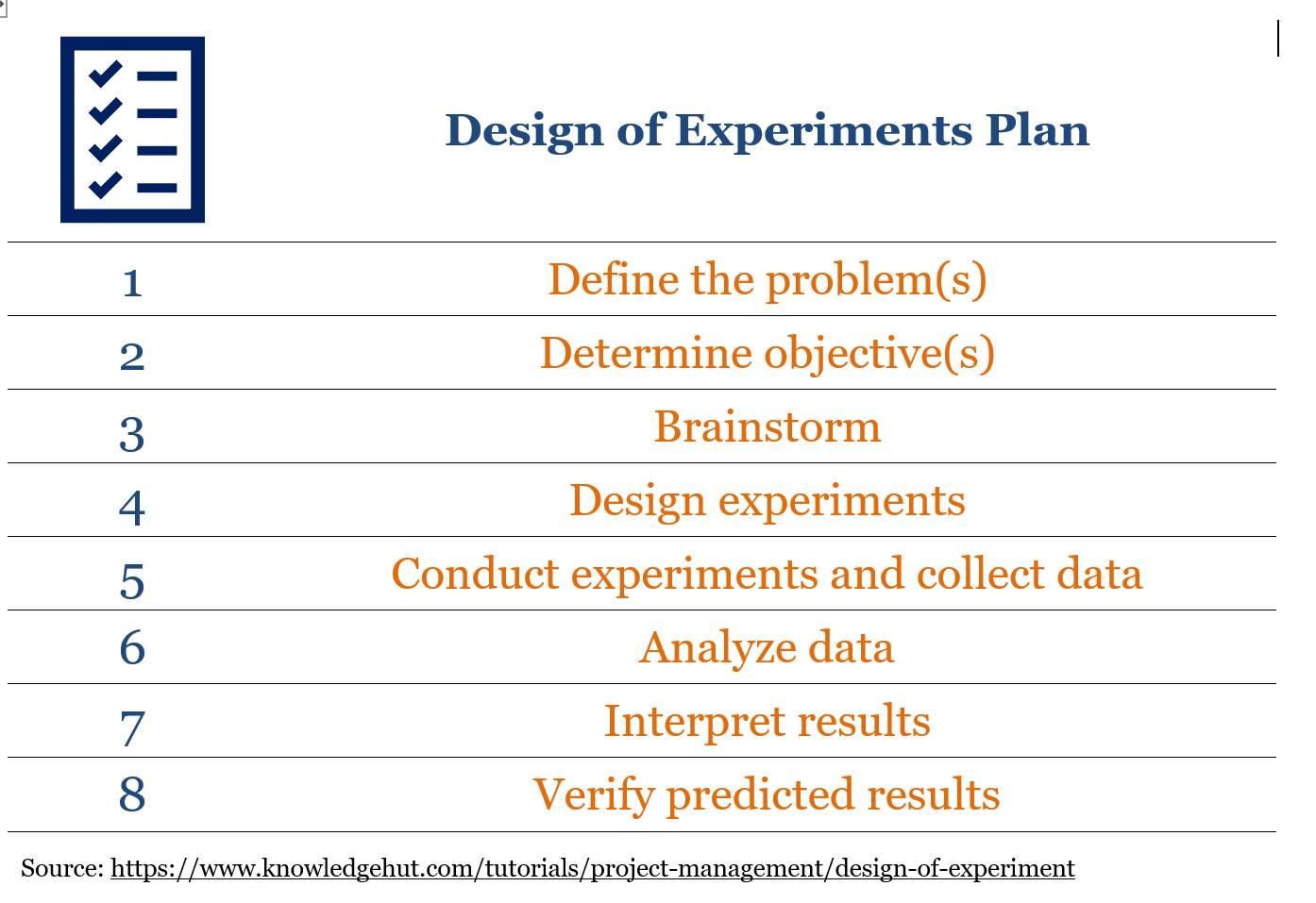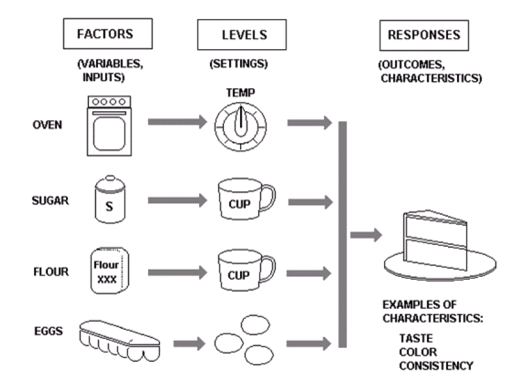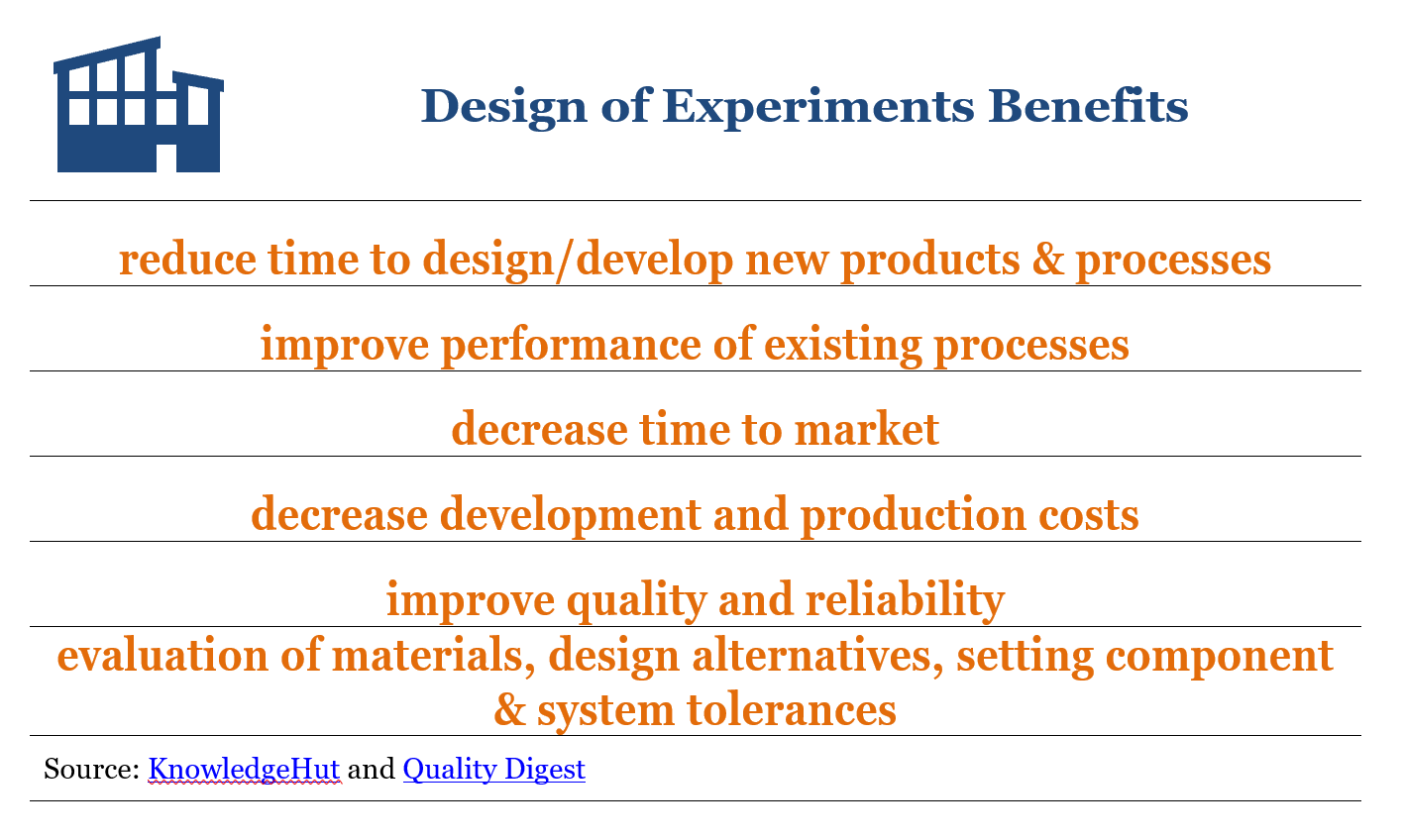Experiments are not just for scientists; they are in fact a tool project managers and engineers have used for years to better understand and refine processes. In the context of project management, an experiment is not in a secret lab with bubbling liquid in beakers; instead, the testing is done in a controlled manufacturing setting. In project management, the quality planning tool of setting up tests for a process is known as “Design of Experiments.”
On this page:

Define design of experiments
The design of experiments (DOE) is a tool for simultaneously testing multiple factors in a process to observe the results. Credited to statistician Sir Ronald A. Fisher, DOE is often used in manufacturing settings in an attempt to zero in on a region of values where the process is close to optimization. At its core, Design of Experiments is a statistical model enabling simultaneous testing rather than iterative testing of single factors.
What you need to know about design of experiments for the PMP®
Project Managers use the Design of Experiment tool in the Quality Planning process to determine the factors of a process, the way to test those factors, and what impact each has on the overall deliverable. Project Managers and those preparing for the Project Management Professional (PMP®) certification need to know of the DOE regardless of the industry in which they work. PMP® exam questions about the design of experiments are testing your understanding of when the tool should be used, how to set up experiments, the types of questions the test will answer, and when to use it instead of other tools.
Project Managers considering using the Design of Experiments should know that success depends on a very rigorous and strict application of it.

The experiment is more than the process is it also about the people. Project Managers using Design of Experiments in their Quality planning must have excellent communication skills. Knowing what to ask about the process (or product) being studied, knowing how to extract information from subject matter experts, and knowing how to share the results of the experiments are critical; communication is an important part of the planning and running of your experiment.
When are design of experiments used
When conducting an experiment that tests only one factor, the impact of factors upon each other is missed. Design of experiment enables the project manager to learn about what happens when factors interact, thus providing a more accurate evaluation of quality. Project managers can use the data from a well-designed experiment in their Quality planning.
Knowing when to use design of experiment is as important as knowing what it is. It is a powerful tool in the Quality planning process and can be used when seeking answers for questions such as:
- What are the factors in a process that are controlled?
- What are the factors in a process that cannot be controlled?
- What are the settings for each factor?
- How do the factors impact each other?
- At what settings does the factors impact each other?
- What are the types of interactions among factors?
In the planning stage, enough time needs to be included in the overall project timeline to plan, execute, evaluate, and document the Design of Experiments. The time put into the experiments can save time later in the project and better ensure the level of quality of the final outputs.
Studying for the PMP Exam?
How and why is design of experiments used
Project Managers who excel in planning will be able to apply that skill to the running of a Design of Experiments for their project. Specific tasks must be conducted in a certain sequence to achieve statistically relevant results.

Note that the tool is called Design of Experiments, plural; a single experiment, even with multiple factors, will not provide enough data. One experiment may provide results which indicate a different problem to solve thus requiring the design of additional experimentation.
A common example of the DOE tool is the baking a cake. With the diagram, you see different factors such as the equipment (oven) and ingredients. And within those factors, there are variables. For example, with an oven, is it conventional or convection? Is it powered by electricity or gas? Is the cooking rack in the bottom, middle, or top? In your design, you must capture the factors specifically so that, just as in any experiment, you can replicate them. If your cake burns on the bottom, is it the heating process (conventional / convection), is it the powering source (electrical or gas), and/or is it the placement of the racks (bottom, middle, top) within the oven? Or do all three aspects of the oven factor impact the interactions among other factors and your final result? You must accurately document each factor to better know how changes may shape the outcome.

In a manufacturing setting, the design of experiment should reflect all factors that work together in the process under study. Consider the equipment, the raw materials, the people, and the environment; each plays a role in the process and changes in some can impact all. The Design of Experiment provides a line of sight into a process so that levels of factors can be manipulated in a controlled manner to better manage the overall quality.
Design of Experiments Benefits
At the most basic level, the design of experiments, if conducted correctly, can result in reduced costs, reduced production time, and more reliable results. Benefits can include:

All PMP® credential holders need to know about design of experiments
Although the design of experiments is associated with manufacturing, all project managers should know what it is, what it is used for, and what the potential benefits can be. It takes knowledge of the tool to determine when it will be beneficial to the project and company. Not only as part of preparing for the Project Management Professional (PMP®) certification exam, but also as a tool that can be used in the right situation. It also takes knowledge of the design of experiments tool in order to correctly answer the hypothetical and situational questions in the exam.
Upcoming PMP Certification Training – Live & Online Classes
| Name | Date | Place |


 New Horizons
New Horizons
 Project Management Academy
Project Management Academy
 Six Sigma Online
Six Sigma Online
 TCM Security
TCM Security
 TRACOM
TRACOM
 Velopi
Velopi
 Watermark Learning
Watermark Learning
 Login
Login




 New Horizons
New Horizons
 Project Management Academy
Project Management Academy
 Velopi
Velopi
 Six Sigma Online
Six Sigma Online
 TCM Security
TCM Security
 TRACOM
TRACOM
 Watermark Learning
Watermark Learning